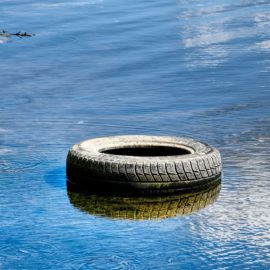
We have a lot of garbage collected daily. What can we do with it? Dumps? Build piles and then cover it over with dirt for a ski slope? Use a dump for housing land, which we have done here? What about burning it for energy? When we were in Virginia, such a plant opened up in Fredericksburg.
America remains awash in refuse as new cases of the coronavirus decline — and that has reignited a debate about the sustainability of burning more trash to create energy. Waste-to-energy plants, which produce most of their power by incinerating trash, make up only about half a percent of the electricity generation in the U.S. But the plants have long aroused considerable opposition from environmentalists and local residents who decry the facilities as polluters, eyesores and generators of foul odor. The industry has been in retreat mode in the U.S., with dozens of plants closing since 2000 amid local opposition and emissions concerns. But members of the industry said they see the increase in garbage production in the U.S. in recent months as a chance to play a bigger role in creating energy and fighting climate change by keeping waste out of methane-creating landfills. One estimate from the Solid Waste Association of North America placed the amount of residential waste up as much as 8% this spring compared to the previous spring. And more trash is on the way. A 2020 study in the journal Science stated that the global plastic packaging market size was projected to grow from more than $900 billion in 2019 to more than $1 trillion by 2021, growth largely due to the pandemic response.
abcnews.go.com
Trash and garbage have to go some where. Using it to generate energy is a better option than just burying it and uses less land said James Regan, senior director of corporate communications for Covanta. Covanta, the largest company in burning waste, processes about 20 million tons (18,144 metric tons) of waste a year to power about a million homes and could increase their output and so power more homes.
“If we’re going to reach climate goals by 2050, the waste sector really can and should be part of that story,” Regan said. “This is low-hanging fruit. So what are we waiting for?” Waste-to-energy plants are expanding in other parts of the world, as more than 120 plants have been built in the last five years. They’re concentrated most heavily in Europe and Asia. But the most recent new plant in the U.S. opened in 2015 in Palm Beach County, Florida. President Joe Biden, meanwhile, has put a premium on the reduction of carbon dioxide emissions and creation of more renewable energy, and while that push has focused heavily on wind and solar power, the administration has also acknowledged a place for waste-to-energy conversion. The White House said in an April statement that the U.S. “can address carbon pollution from industrial processes” by including waste-to-power in the mix.
Mike Ewall, director of the Philadelphia-based Energy Justice Network said that resistance to these plants exists. They emit mercury and dioxins and other particles into the air. This thwarts building more despite the energy produced.
“The notion that this industry is going to be building new plants is just ludicrous,” Ewall said. But the fact remains that creation of garbage has increased, and municipalities have to deal with it somehow. One study, published in the scientific journal Environment, Development and Sustainability, attributed the increase to factors such as panic buying and more reliance on single-use items. Medical waste has also increased due to the heavy use of personal protective equipment, the study found. As the pandemic has abated in many part of the country and the economy has reopened, commercial waste has increased, but residential waste creation has not slowed. In Portland, Maine, residential waste was up 12% and commercial was up 2% in June, said Matt Grondin, spokesman for ecomaine, which operates a waste-to-energy power plant. Converting all that new garbage to energy is the best available option, Grondin said. “It’s a lot of garbage. You can probably imagine with a lot of people at home, cleaning out, doing projects, that accounts for a lot of the increase,” he said. “It has to go somewhere.”
Other options used are compacting the trash and then siphoning the methane produces as fuel.
The garbage-to-gas program at the landfill in St. Landry Parish, Louisiana, started as a way to get carbon credits by burning off methane, said Richard LeBouef, executive director of the parish Solid Waste Disposal District. Now natural gas from the landfill powers contractor Waste Connection’s 12 garbage trucks, the landfill’s five pickup trucks and six trucks for litter abatement teams. The district has put $2.7 million, plus maintenance, into the system. “What we’re saving monetarily is not super-substantial but in accordance with the green issue I think it’s a great thing,” LeBouef said.
Waste to energy plants burn the trash at 2000 degrees creating boiling water that creates steam that is used to power generators to produce energy.
Attempts to convert more pandemic garbage into energy are likely to be controversial, said Frank Roethel, director of the Waste Reduction and Management Institute at the State University of New York at Stony Brook. But using the trash to make power beats letting it pile up, he said. “Here you have the Biden administration talking about climate change, and talking about strategies that could help reduce emissions,” Roethel said. “And waste to energy doesn’t necessarily get the recognition, but it could certainly reduce emissions.”
This article was in the paper and I had to search for it. As I think back I don’t remember energy being a selling point for the Fredericksburg plant but I do remember more trash trucks on the road as they got trash from distances to make it viable. It did have a tall smoke stack.


